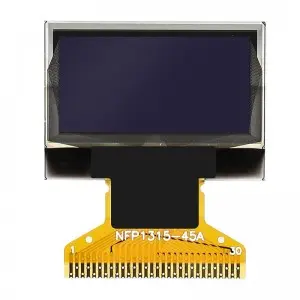Amid the fierce competition in today’s display technology landscape, OLED (Organic Light-Emitting Diode) technology stands out with a series of revolutionary advantages and is penetrating various fields, from consumer electronics to professional displays, at an unprecedented pace. Compared to traditional technologies like LCD (Liquid Crystal Display), the core advantage of OLED screens lies in their self-emissive nature, where each pixel can be independently turned on and off. This fundamental difference enables comprehensive breakthroughs in power consumption and form factors, solidifying its position as the next-generation mainstream display technology.
Outstanding Performance of OLED Screens: Energy Efficiency, High-Speed Response, and Wide Viewing Angles
The primary advantage of OLED screen technology is its extremely low power consumption. Unlike LCD screens, which rely on a continuously operating backlight layer, OLED pixels can be completely turned off when displaying dark or black images, consuming no energy. Data shows that a 24-inch AMOLED module consumes only 440 milliwatts, while a polysilicon LCD module of the same size consumes up to 605 milliwatts, demonstrating a significant energy efficiency advantage. This is crucial for mobile devices striving for long battery life. Secondly, OLED screens boast an astonishing microsecond-level response speed, nearly a thousand times faster than traditional LCD screens, completely eliminating motion blur in dynamic visuals. This provides an unparalleled smooth experience for high-end gaming, virtual reality, and high-speed video content. Additionally, thanks to the self-emissive principle, OLED screens exhibit almost no degradation in color and brightness even when viewed from extreme angles, with both vertical and horizontal viewing angles exceeding 170 degrees, ensuring excellent visual consistency for group viewing.
Image Quality and Durability of OLED Screens: High Resolution, Wide Temperature Range, and Thin, Lightweight, Shock-Resistant Design
In terms of display precision, OLED screen technology also excels. Currently, the vast majority of high-resolution OLED displays employ Active-Matrix (AMOLED) technology, where the emissive layer can accurately reproduce over 260,000 rich colors, achieving exceptionally high color saturation and contrast. With continuous technological iterations, the resolution of OLED screens is constantly reaching new heights. At the same time, OLED devices feature an extremely wide operating temperature range (typically between -40°C and 80°C), enabling stable performance in harsh outdoor cold or high-temperature industrial environments, significantly expanding their geographical applicability. Structurally, OLED screens do not require a backlight module or liquid crystal layer, making them much thinner and lighter than LCD screens of the same size. This not only allows for slimmer device designs but also results in a higher shock resistance coefficient, enabling them to withstand greater acceleration and vibration, and adapt to more demanding application environments.
The Form Factor Revolution of OLED Screens: Flexible Displays and Future Prospects
The most captivating potential of OLED screen technology lies in its form factor plasticity. It can be vapor-deposited or coated onto flexible substrate materials such as plastics or resins, enabling the production of bendable, foldable, or even rollable “soft screens.” This characteristic is fundamentally transforming the design paradigm of electronic products, giving rise to innovative devices like foldable smartphones and rollable TVs, and opening up limitless possibilities for future human-computer interaction. In summary, from exceptional image quality and robust environmental adaptability to revolutionary physical forms, OLED screen technology is leveraging its comprehensive and diverse advantages to build a more vibrant, free, and ubiquitous display world.
Post time: Nov-11-2025


